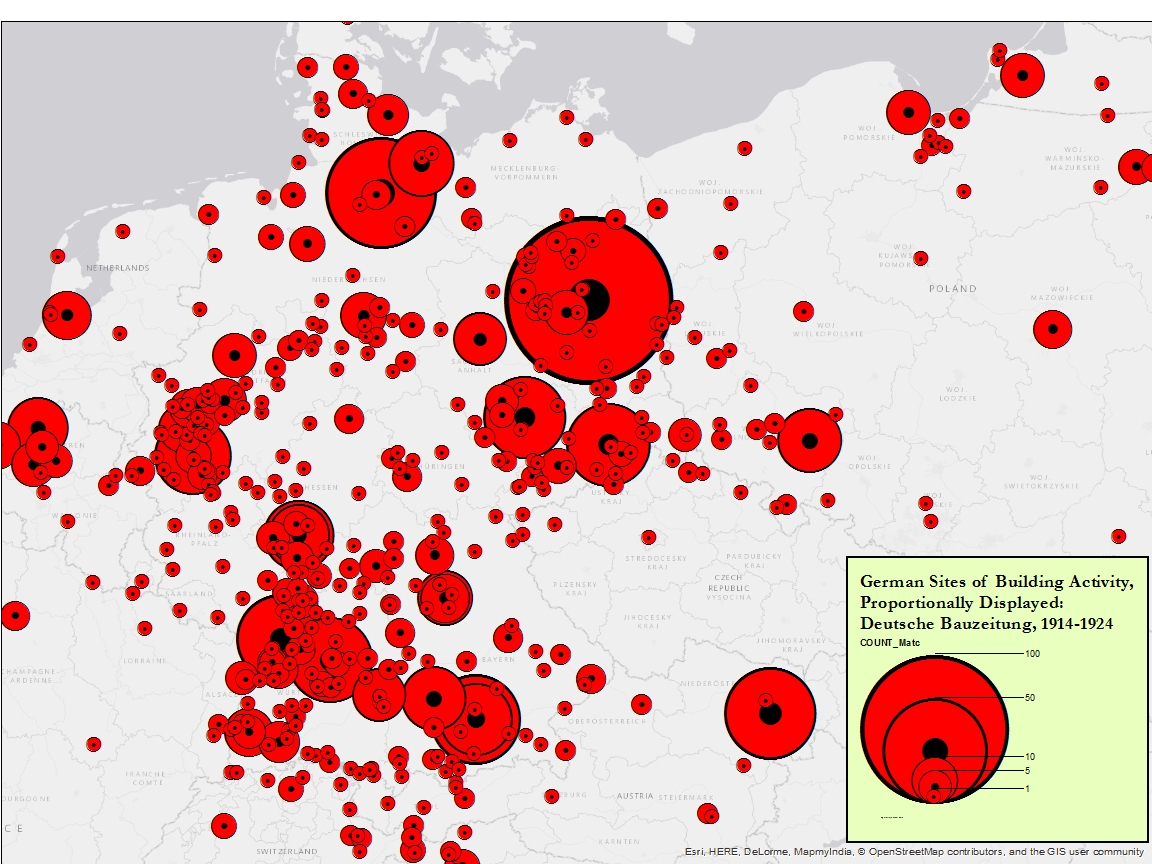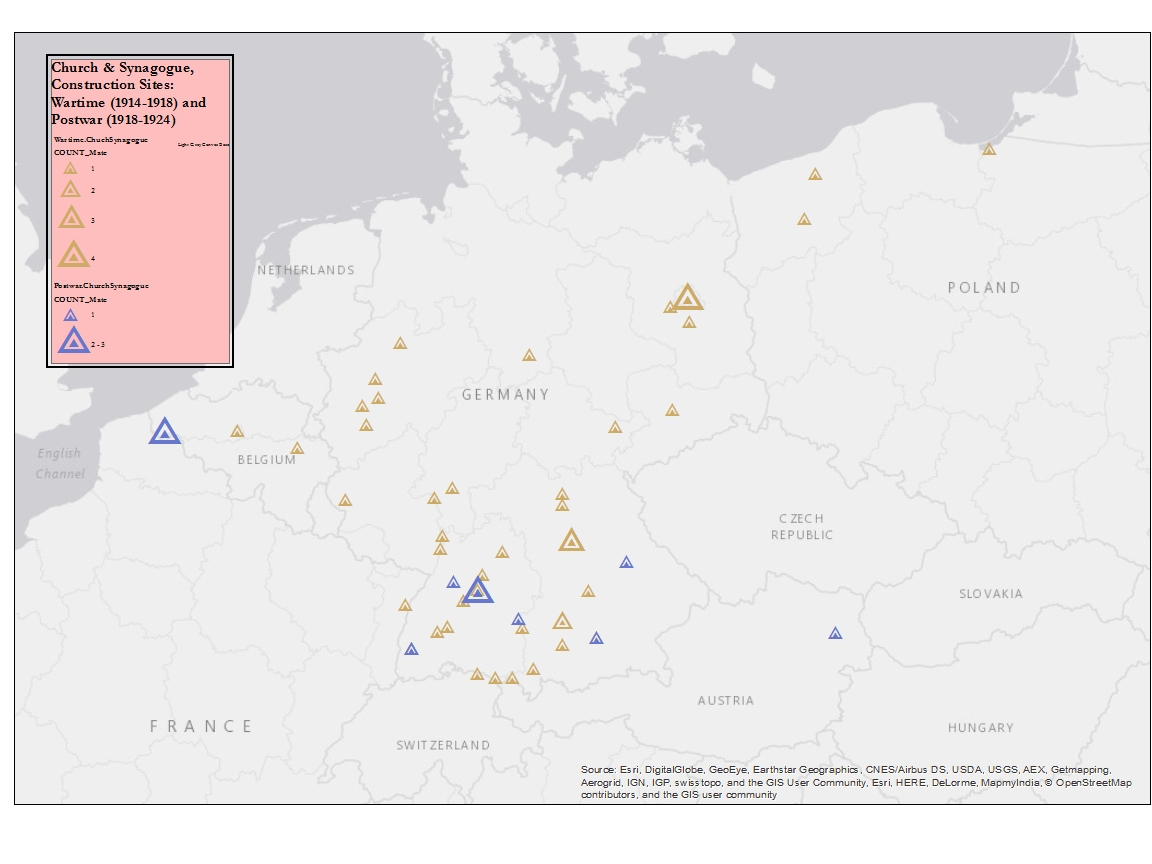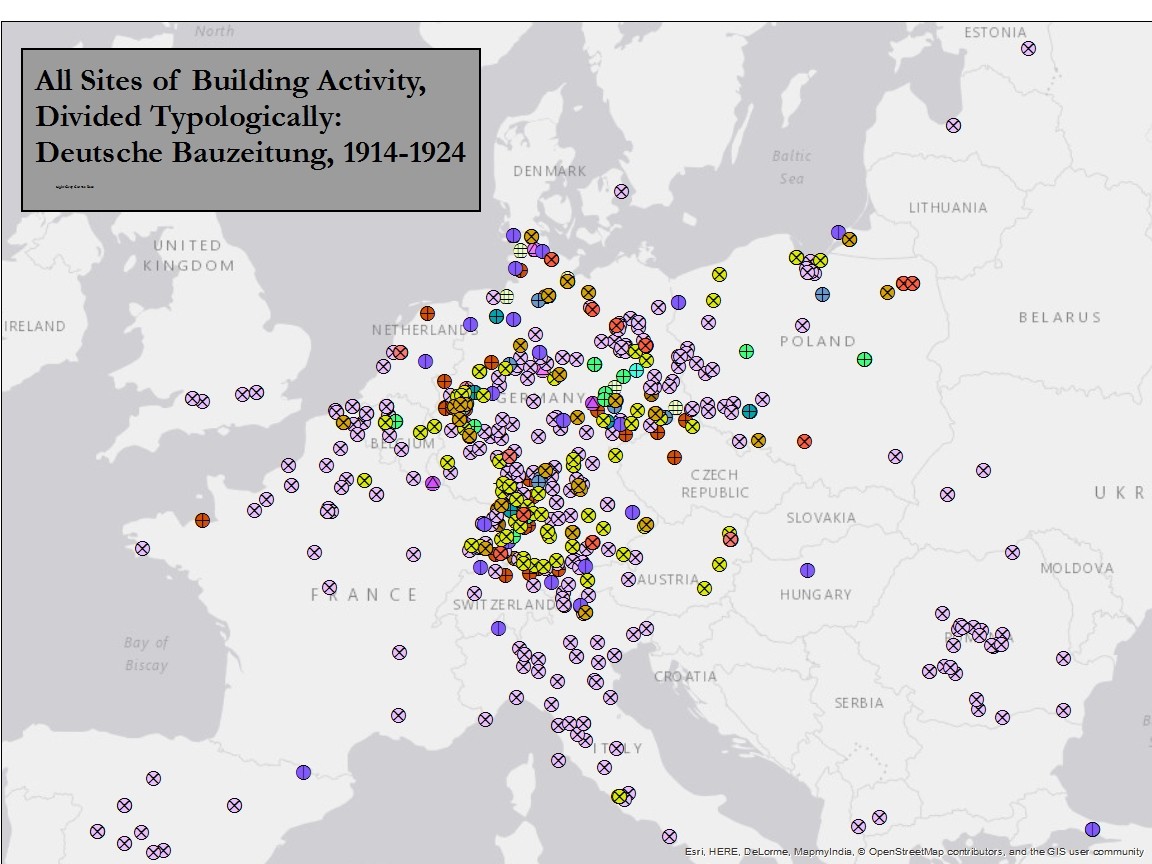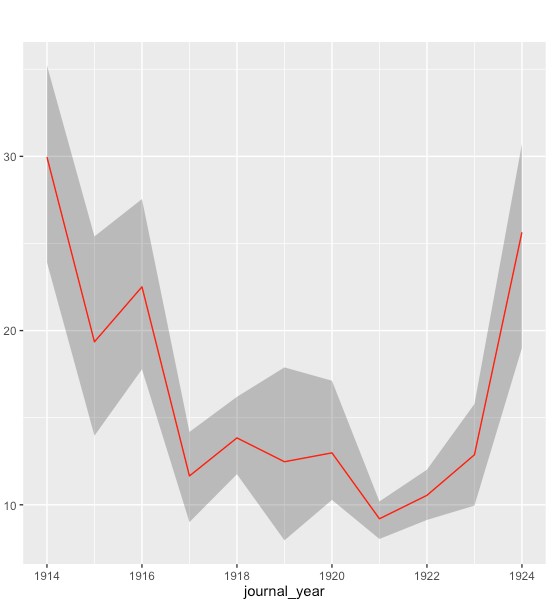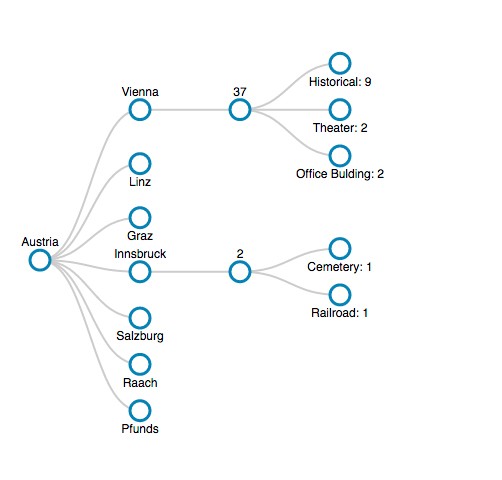This is a story of how visualizing historical evidence in a digital environment can expand the art-historical research process but also be a means of developing art-historical research questions in fundamental ways.
The project began in 2007 as a research topic focused on the World War II period that resulted from an ongoing collaboration with historical geographer Anne Kelly Knowles. Digital mapping of the spaces and places of the Holocaust showed that many concentration camps were focused on forced-labor construction activity, as opposed to the traditional narrative, which stressed their role in armaments production. It signaled the significance of the building industry for Nazi military, economic, and racist goals. These results also raised a deep-context follow-up question: what architectural and political role did the construction industry play more generally in Germany from World War I through World War II? This question needed a new approach, one that might be called an architectural history from below and that by necessity entails, for example, a discussion of labor and materials more than of design. The question has also raised problems involving art-historical sources, in particular how and even whether to visualize evidence in a digital mapping environment.
The real issue is, how does one research and then visualize for analysis a topic as big as a construction industry? This problem has crucial implications not only as a historical subject but also in terms of its relationship to the methodological process. Process here has a double meaning: it refers on the one hand to the historical subject of construction in Germany from World War I through World War II as a process of building in time, and, on the other, to methodology, to an analytical approach to the evidence. There is no single source for the construction industry, and its output of buildings, large and small, from vernacular to high-design, is impossible to capture. Digital methods, however, are meant to tackle large datasets, and the ability of geographic information systems (GIS) to map spatial information can help us to address this large-scale problem.
